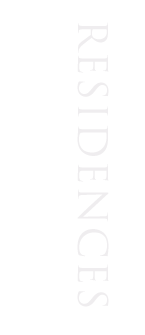 |
A History of Aquhorthies
The lands of Auquhorthies (Achorties/Achorters)
were located within the Barony of Balquhain which was created a
burgh of barony by David II in 1340. It had generally remained in the hands of
the Leslie family from this time until 1919, when their estates
were broken up, following the death of Colonel Charles Stephen
Leslie in 1916.
John Seton of Auquhorties received a charter in
1610 for Minnies [Menie] (Reg. Mag. Sig.)> shortly afterwards (1614) erected
into a free barony (Reg. Mag. Sig.)> the grant was made " cum privilegio de
infang thief, outfang thief, sok, sak, thole/ thame, pitt and gallows." Those
who resigned these lands and rights when John Seton acquired them from the King,
were William Udny, Senior, of that Ilk ; William Udny, Junior, feudatory of the
same ; Robert Udny of Tulliquhortie ; Alexander Udny, son of the said William
Udny, Senior ; William Seton of Muny (Mounie), and Alexander Blackball of that
Ilk. Minnies is in the parish of Foveran, and nearer Barra than Blackhall.
John Seton of Aquhorthies and Menie
was Chamberlain at Fyvie Castle to Alexander Seton, 1st Earl of
Dunfermline and Chancellor of Scotland. He was
descended from
Alexande Seton, 4th of Meldrum, and
leased
the lands and farm of Aquhorthies through his father's assistance.
He leased the House of Aquhorthies from the Leslie's of Balquain,
and which was his private residence
when he was not stationed at Fyvie Castle. He married Helen
Leith, daughter of John Leith 2nd of Harthill (d. 1625) and Helen
Auchinleck, and had several children. He is remembered in
the family papers of the Skene's of Rubislaw:
"Letter from John Seton to Laird of
Tibertis (Tipperty) sending wood to aid cure for the gravel for
his cousin John Skene's wife, dated at Auchquhorty, 17 June 1638".
The papers of the Leslie's of
Balquain hold the following records for Aquhorthies: The
Titles and teinds to the lands of Abirsnethok, parish of Monymusk,
1560s - 1592; Achorthies, Knokcollachie, Pitcaple and Drummis, and
the superiorities of Woodhill and half lands of Blairdaff,
lordship of Garioch, 1680 - 1708; Auchorthies, 1594 - 1708;
Auchquhortheis and Blairdaff, 1391 - 1616; Mains of Aquhorthies,
1638 - 1654; Overtoune of Auchquhorthies; Inventories of writs for
the lands of Auchorthies, 1622 - 1637, 1671 - 1683, 1688; Legal
papers re. Leslies of Balquhain, 17th c; Leslie family and Gordon
of Brakko, 1589 - 1636; Gordon of Haddo, 1670 - 1672; Robertson of
Achorties, 1670 - 1673; Forbes of Tolquhan, 1674; Forbes of
Acquorthies, 1638 - 1674;
Aquhorthies Roman Catholic College was situated at
Aquhorthies, Inverurie, Aberdeenshire from 1799 until 1829. In
1829 it was united with the Catholic seminaries of Chapeltown
and Lismore, and moved with them to Blairs Estate, Maryculter,
Aberdeenshire, gifted to the Church shortly before for this
purpose by John Menzies of Pitfodels. The college which they
formed was called St Mary's Roman Catholic Training College, but
came to be known more commonly known as Blairs College.
The College has its roots in the fourteenth-century Scots College in Paris,
which was established by David, Bishop of Moray, in 1325. It had a difficult
early history, but prospered during the seventeenth and early eighteenth
centuries, becoming famous for its library, which came to possess, in addition
to many valuable books, a large collection of historical manuscripts relating to
Scottish history. These records were brought to Paris for safekeeping during the
Reformation, although many were lost subsequently during the French Revolution.
Some of the library's contents were salvaged and brought back to Scotland by
Abbe Paul MacPherson in 1798, with the remainder being removed from Paris and
deposited at Blairs College in 1837. Most of these records were subsequently
deposited in the Scottish Catholic Archives, 16 Drummond Place, Edinburgh, in
1958.
An account of the foundation and early history of the College is given by
Major Hay of Seaton, in The Blairs College Library in Library
Review 17 (1931) 2 - 6., and a poem preserved in the paper of Aquhorthies,
entitled The Boobie , contains a reference to Boneparte's
coming here , signed Aquhorthies February 14th 1817.
Aberdeenshire Courts
records for 1634 note an Exhibition:
John Seaton of Auquhorthies and George Seton, his eldest lawful
son by his wife Helen Leyth v. Mr. Alexr. Davidson, Advocate in
Abd. and Wm. Seton of Udny, for his interest. The writing of
which exhibition was sought was a contract dated 30 May, 1634,
whereby Wm. Seton (younger of Mounie, Udny and of Menie), with consent of his wife, Margaret Grahame,
bound themselves for onerous causes to convey to the Pursuer and
his son in liferent and fee respectively, the "Maines of Udny
with the towr fortalice maner place ;" &c. , the lands of
Kilmortoun, Milne of Udny, the " heretabill richt libertie &
priviledge of the mercat callit Crystes fair and the advocatione
donatione and richt of patronadge of the Kirk of Udny callit
Crystes Kirk and Chappellenrie of Udny," &c. The deed was
exhibited but a motion made for registration was resisted and
the case seems to have been subsequently advocated to the Court
of Session.
Later, Aquhorthies became
associated with:
Thomas Forbes, 1661 - 1673; William Fordyce, Baillie of Aberdeen;
and Bishop Hay, RC. The bishop was buried on the Leslie estate of
Fetternear, having died nearby at the Aquhorthies seminary (which
replaced Scalan). During his funeral procession, "his body
was taken from Aquhorthies with the students ‘all dressed in
mourning accompanied the hearse and made a very decent
appearance.’ The House eventually became a Roman Catholic College. It is interesting to note that
the three JK paintings of the region: of Scalan, Aquhorthies and
Blairs, are all attributed to James Keenan 1844-1932. The ‘Scots
Colleges in Catholic Europe’ exhibition [Edinburgh City Art
Centre].
|

